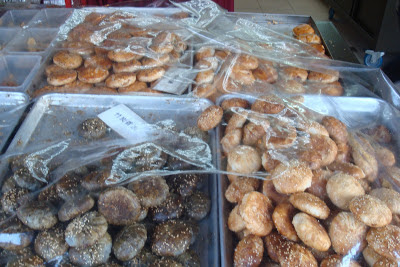have you anything to eat? 1st week of Easter Thursday 1
Our gospel today speaks of Jesus revealing himself
once more in a meal, specifically by asking for a meal from the apostles –
“have you anything here to eat?” I said
“once more” because this would not just be the first or the second time that the
resurrected Lord appeared to his apostles in the context of a meal. And this is also not the only time when the
apostles shall recognize Jesus in the context of eating.
Scholars explain this saying that Jesus is presenting
proof that he indeed resurrected bodily – that he is not a ghost or just a mere
spirit because spirits do not eat. Jesus
has a resurrected body. We do not really
know how it looks like and what it is composed of since his body can appear and
disappear and it seems that he can pass through closed doors and walls. But the thing is the body of the resurrected
Jesus is a real body for he ate food with them.
Isa pa gid ka explanation kon ngaa nagapakita sia sa
pagkaon amo nga dira sia dayon makilala sang iya mga gintutun-an. Probably it’s the way he eats, it’s the way
he chews food, it’s the way he breaks bread, it’s the way he drinks, it’s the
stories he tell. The thing is Jesus
becomes easily recognizable to his disciples when he is eating with them. Eating seemed to define Jesus so much so that
one could not miss him as him, one could not miss him as Jesus, as our Lord,
when he eats and when he invites people to eat.
What are the implications of this realization?
First – the importance of our Sunday Eucharist. In early Christianity one of the names for
Sundays is the day of apparitions. It is
the day when the Lord appears. Sunday by
the way is the day of the Eucharist – it is the day of communal meal and
precisely they call Sunday the day of apparitions because they believe that Christ
will appear in their midst when they celebrate the meal, Christ will appear in
their midst when they gather for the meal.
Not that Jesus would appear as if by magic, but that they would
recognize him who is already in their midst.
That recognition will be in and through the Eucharist that they
celebrate, in the meal.
The experience of the apostles when they gather with
Jesus is always described with the words “he opened their minds, and “he opened
their eyes” and also “they realized it was the Lord.”
Our gathering in this Eucharist should also produce
the same effect. In the Eucharist our
minds are opened. The Eucharist gives us
the power to see things from a wider perspective, from a deeper
perspective. It should open our eyes to
look at things and events with the eyes of faith. In the Eucharist we are given the chance to
see things and people differently – to see things and think things in a new
way, because we have come to realize that Jesus is in our midst. This is what our Sunday Eucharist should
bring us into – because when Jesus is in our midst things turn out differently
. . . we become more hopeful and more trusting, more loving, and more
forgiving. It is only in the Eucharist,
in this meal, that we can realize that Jesus is in our midst and that things
can be different when he is around.
Another implication for the celebration of the meal
which is the eucharist will be shared this afternoon during our holy hour.

Comments